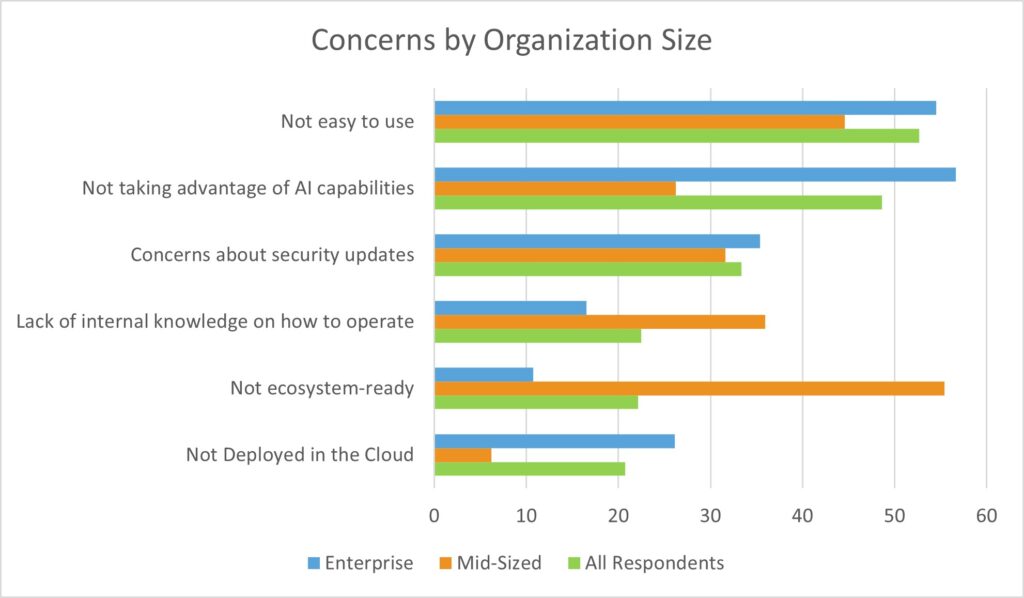This is a guest post written by Shari Lava, Senior Director, AI and Automation at IDC.
Aging software has a price
A lot has changed in the world of technology in the last five years. Between the pandemic, geopolitical instability, data privacy legislation, and of course, AI, managing data has never been more critical to business operations or to unlocking true business innovation.
The adoption of technologies to connect intra-organizational applications and move data has exploded in recent years, whether looking at data management technologies or connectivity technologies like iPaaS or API management. And the majority of the solutions are now delivered via the cloud, meaning they are constantly being infused with new features and security updates.
But the same modernization shift has not yet happened for inter-organizational data exchange solutions like managed file transfer (MFT). For many organizations, the tools they are using today have not undergone radical transformation, and largely resemble the solutions of five years ago. If it continues, this lack of modernization is going to impact competitiveness and expose the organization to unnecessary risk.
Any business that assumes its MFT solution is not broken because it functions normally could be making a critical mistake.
According to IDC’s AI-Enhanced Connectivity Automation Survey (June 2024), 35.4% of organizations of all sizes that use MFT solutions implemented them five or more years ago. When filtering the data for enterprise-sized organizations, 56.1% of enterprises implemented an MFT solution five or more years ago, meaning that there are a lot of aging MFT deployments.
Between the ongoing evolution of software and the consolidation of the MFT market, it is extremely likely that some of those organizations are spending more than they need to manage MFT, not utilizing the full opportunities of these solutions, or are running outdated software for critical data exchange capabilities with their strategic business partners.
Most companies have serious concerns about the aging MFT solutions deployed today. Figure 1 shows that ease of use and a lack of new capabilities are primary concerns, especially for enterprise organizations.
Mid-sized companies are concerned about the fitness of their aging solution for the data exchange ecosystem, as well as ease of use, but they also admit they have few internal resources with in-depth knowledge of operating the solution.
Not being able to effectively use or trust the solution holds back companies from having the deeper ecosystem data exchange needed to keep the business competitive or having the right business context available for AI and automation strategies.
Figure 1: Concerns with aging MFT solutions
Q: What is your biggest concern with your current MFT that is older than five years?

Source: IDC’s AI-Enhanced Connectivity Automation Survey, June 2024; n = 94
So, are most aging MFT solutions broken? They certainly could be, and what’s worse is that these solutions are challenging enough to use that many organizations just can’t be sure.
But even if they appear to be secure and functioning, organizations still need to ask themselves the following key questions:
- Are we confident the solution is functioning optimally?
- Is the solution secure against the latest attack methods?
- Are we able to take advantage of modern capabilities to simplify deployment, monitoring, and observability for my data exchange needs?
- Could we be creating more business value by leveraging a modern MFT solution for both existing and new data exchange needs
- Is the MFT solution ecosystem ready and will it support the next set of use cases demanded by our suppliers and customers?
The bottom line is this: The need for data exchange technologies like MFT is growing as more organizations take an ecosystem approach to experience management. IDC believes the MFT market must go through significant renewal to meet business needs in the future, and that adoption will continue to grow.
Download the IDC Analyst Connection report today.

Follow us on social